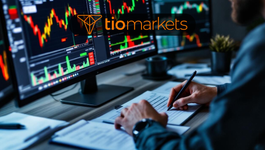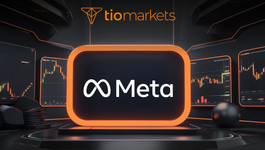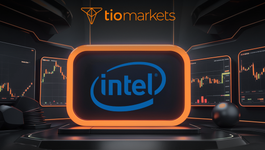Futures vs Options: Key Differences Explained | TIOmarkets
BY TIOmarkets
|June 13, 2024Understanding the financial markets requires a grasp of various trading instruments, among which futures and options stand out. Both play pivotal roles in the world of trading, offering unique opportunities and risks. This article delves into the key differences between futures and options, aiming to equip traders with the knowledge to navigate these instruments effectively.
What are Futures?
Futures contracts are standardized agreements to buy or sell an asset at a predetermined price at a specified time in the future. They are traded on exchanges and are used by traders to hedge against price movements or to speculate on the direction of an asset's price.
Characteristics of Futures
Futures contracts come with an obligation to buy or sell the underlying asset. This means that the holder of a futures contract is required to fulfill the terms of the contract at expiration. Futures are also marked to market daily, which means the gains or losses are settled at the end of each trading day.
Another key characteristic of futures is their standardization. Futures contracts specify the quantity, quality, and delivery time of the underlying asset, making them highly standardized financial instruments.
Pros and Cons of Trading Futures
- Liquidity: Futures markets are typically very liquid, offering traders the ability to enter and exit positions easily.
- Leverage: Futures trading allows for high leverage, meaning traders can control large positions with a relatively small amount of capital.
- Risk: The leverage available in futures trading can amplify losses as well as gains, making it a high-risk trading strategy.
What are Options?
Options are financial derivatives that give the buyer the right, but not the obligation, to buy or sell an underlying asset at a specified price on or before a certain date. Options come in two types: calls and puts.
Characteristics of Options
Options provide flexibility to the holder. A call option gives the holder the right to buy an asset, while a put option gives the holder the right to sell. Importantly, the holder is not obligated to exercise this right.
Options are also known for their ability to provide leverage. However, unlike futures, the risk with options is limited to the premium paid for the option. This makes options a popular choice for risk-averse traders.
Pros and Cons of Trading Options
- Flexibility: Options offer the flexibility to speculate on the direction of the market with limited risk.
- Risk Management: The structure of options allows for effective risk management strategies, such as hedging.
- Complexity: Options trading can be complex and may require a higher level of understanding than other trading instruments.
Key Differences Between Futures and Options
While futures and options are both derivatives used by traders worldwide, they have distinct differences that can affect a trader's decision to use one over the other.
Obligation vs. Right
The fundamental difference between futures and options lies in the obligation. Futures require the buyer and seller to fulfill the contract terms at expiration, whereas options give the buyer the right but not the obligation to buy or sell the underlying asset.
Risk Exposure
Futures expose traders to potentially unlimited risk, as they are obligated to fulfill the contract terms. In contrast, the risk with options is limited to the premium paid for the option, offering a more controlled risk environment.
Cost Considerations
Trading futures generally involves lower costs compared to options, as options come with premiums that can be costly. However, the leverage available in futures trading can lead to significant losses, which must be considered.
Conclusion
Futures and options are powerful financial instruments that offer traders a range of strategies for speculation and risk management. Understanding the key differences between these instruments is crucial for making informed trading decisions. While futures offer high leverage and liquidity, they come with the risk of significant losses. Options, on the other hand, offer flexibility and limited risk but can be complex and costly. Traders should consider their risk tolerance, trading strategy, and the specific characteristics of each instrument before diving into the futures and options markets.
Factors Influencing Futures and Options Prices
Several factors influence the prices of futures and options contracts. For futures, factors such as supply and demand dynamics, interest rates, geopolitical events, and economic indicators can impact prices. In the options market, factors like implied volatility, time to expiration, interest rates, and the price of the underlying asset play a significant role in determining option prices.
Supply and Demand Dynamics
Supply and demand for the underlying asset can have a direct impact on futures prices. If there is an increase in demand for a particular asset, the price of the futures contract may rise as well. Conversely, if supply outstrips demand, the futures price may decline.
Implied Volatility in Options
Implied volatility reflects the market's expectations for future price fluctuations of the underlying asset. Higher implied volatility generally leads to higher option premiums, as there is a greater likelihood of significant price movements. Traders often monitor implied volatility levels to assess the potential risks and rewards of options trading.
Interest Rates and Options Pricing
Interest rates play a crucial role in options pricing. Changes in interest rates can impact the cost of carrying the underlying asset, which in turn affects option prices. Higher interest rates typically lead to higher option premiums, as the cost of carrying the asset increases.
Risk Management Strategies in Futures and Options Trading
Effective risk management is essential in futures and options trading to protect capital and minimize losses. Traders employ various strategies to manage risk, including hedging, diversification, and position sizing.
Hedging with Futures
Hedging involves taking an offsetting position in the futures market to protect against adverse price movements in the underlying asset. For example, a producer of a commodity may use futures contracts to hedge against price fluctuations, ensuring a more predictable revenue stream.
Diversification in Options Trading
Diversification is a risk management strategy that involves spreading investments across different assets to reduce exposure to any single asset or market. In options trading, diversification can help mitigate the impact of adverse price movements on a trader's overall portfolio.
Position Sizing for Risk Control
Position sizing is a critical aspect of risk management in futures and options trading. By determining the appropriate size of each position based on risk tolerance and account size, traders can limit potential losses and protect their capital from significant drawdowns.
Start Trading Futures and Options with TIOmarkets
Ready to put your knowledge of futures and options into practice? Join TIOmarkets, the top-rated forex broker, and access a world of trading possibilities. With over 170,000 accounts opened across more than 170 countries, our platform offers you the opportunity to trade over 300 instruments across 5 markets, including Forex, indices, stocks, commodities, and futures, all with low fees. Enhance your trading skills with our comprehensive educational resources and step-by-step guides. Create a Trading Account today and embark on your journey to trading success.

Risk disclaimer: CFDs are complex instruments and come with a high risk of losing money rapidly due to leverage. You should consider whether you understand how CFDs work and whether you can afford to take the high risk of losing your money. Never deposit more than you are prepared to lose. Professional client’s losses can exceed their deposit. Please see our risk warning policy and seek independent professional advice if you do not fully understand. This information is not directed or intended for distribution to or use by residents of certain countries/jurisdictions including, but not limited to, USA & OFAC. The Company holds the right to alter the aforementioned list of countries at its own discretion.
Join us on social media

Behind every blog post lies the combined experience of the people working at TIOmarkets. We are a team of dedicated industry professionals and financial markets enthusiasts committed to providing you with trading education and financial markets commentary. Our goal is to help empower you with the knowledge you need to trade in the markets effectively.
Related Posts





